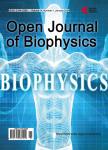Tibiofemoral Joint Forces during the Stance Phase of Gait after ACL Reconstruction
Tibiofemoral Joint Forces during the Stance Phase of Gait after ACL Reconstruction作者机构:Campbell Clinic Department of Orthopaedics and Biomedical Engineering University of Tennessee Health Science Center Memphis USA Department of Biomedical Engineering University of Memphis Memphis USA Department of Physical Therapy University of Tennessee Health Science Center Memphis USA
出 版 物:《Open Journal of Biophysics》 (生物物理学期刊(英文))
年 卷 期:2013年第3卷第4期
页 面:277-284页
学科分类:1002[医学-临床医学] 100214[医学-肿瘤学] 10[医学]
主 题:ACL Reconstruction Tibiofemoral Joint Forces Gait
摘 要:The main goals of anterior cruciate ligament reconstruction (ACLR) are to restore knee function and prevent development of osteoarthritis (OA). However, the incidence of early-onset OA remains higher in patients following ACLR. The purpose of this study was to compare the computed tibiofemoral joint (TFJ) forces and muscle forces of ACLR knees to those of BMI-matched control subjects during the stance phase of gait. We hypothesized that the use of principal component analysis would allow us to characterize alterations in three-dimensional TFJ loads and muscle forces after ACLR as compared to a healthy control population. Of the eight ACLR knees, four displayed an abnormal TFJ compressive force. In three of these four ACLR knees that displayed abnormal compressive forces, one of the major muscles/muscle groups crossing the knee also deviated from the control group. We believe that each subject has a unique response to their injury, reconstructive surgery, and rehabilitation.



